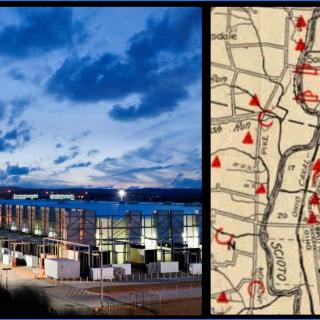Before the committee members, volunteers, and organizers begin to hit the doors, we should look at a little bit of what I call “organizing math.” Yes, I know saying the word, “math,” is a trigger alert for many would be activists and organizers, but we’re not talking about anything too complicated, but we are talking about the fact that counting is very important in evaluating and implementing an organizing drive.
As a reminder, the first thing to count, at least roughly, is the households in the community that the organizing committee is beginning to organize, or the number of workers in the company, or units in the apartment complex. For ACORN, ideally, we want to organize a community with somewhere between 1500 and 3000 households. For us the reason is straightforward. We want the area to be large enough to be sustainable through membership dues. Like it or not, many unions make a similar assessment in deciding whether to organize various units of workers. The American Federation of Teachers some years ago would only organize a school district if it had at least two or three hundred teachers, because that would be the smallest unit they though would be sustainable through their membership dues structure. Other unions often petitioned before the NLRB for units that were fifty workers on average, but they were often aggregating those units with others, and would still eschew units that were very small, unless extremely strategic for some reason. In tenant organizing, the same issue of size and scale is critical.
You also want there to be sufficient numbers that when they get together in meetings, they get the sense of power. A meeting for thirty or fifty on a monthly basis feels better to participants than eight to twelve does. People want to believe they are joining a group with the potential of power, not a small club they can be blown away by the slightest breeze. Organizations in rural communities are absolutely possible and desirable, but they are more difficult to sustain through a dues program unless the percentage of members compared to the total population being organized if extremely high. ACORN in its early days organized a small community where there was a company town for a paper company and was able to support the organization because more than 50% of the town of 500 families joined the organization. Still, that’s a hard row to hoe, so be careful. Count twice, before hitting the first door.
Once you know the numbers of your targeted constituency, that’s just the beginning of counting, but Part II of Tips & Tools #17, will address how you count, once you are on the doors. For now, let’s talk about what we call “density.” Often you will read about the percentage of workers that are members of labor unions in America. The figures are at record lows and in the private sector falling towards 5% of such workers actually being union members. Overall, including public sector workers, it’s a bit over 11% now. Organizational density is the percentage of workers that are members of unions compared to the total number of private sector or public sector or both forms of employment. In right-to-work states or workplaces, union organizers and representatives pay a lot of attention to whether or not their membership is 50% or over so that they will have the strength to bargain good collective agreements. Often this is the difference between collective bargaining and collective begging.
In community organizing density is also important. Within the first six months to a year of the organization’s founding, we set the benchmark for success of the organization at reaching a 10% membership figure. When we were discussing the optimal size for the organizing committee, 1% of the size of the organizing target was our goal.
Part of what makes organizing math and counting members so important, especially for a new and fledgling organization, is that so many groups are hardly more than one or two self-appointed people and “the rats in their pocket,” so to speak. One of ACORN’s organizers based in Delhi, India, when we discussed political parties that proliferate in the country, noted that there were “many parties of one.”
In building effective mass organizations, we want to be able to know our numbers to prove our strength. We don’t have to compare ourselves to others, but the targets of our actions will understand the fact that we have a base and know who they are down to the last detail, and that is a message – and a number -- that they won’t forget.



